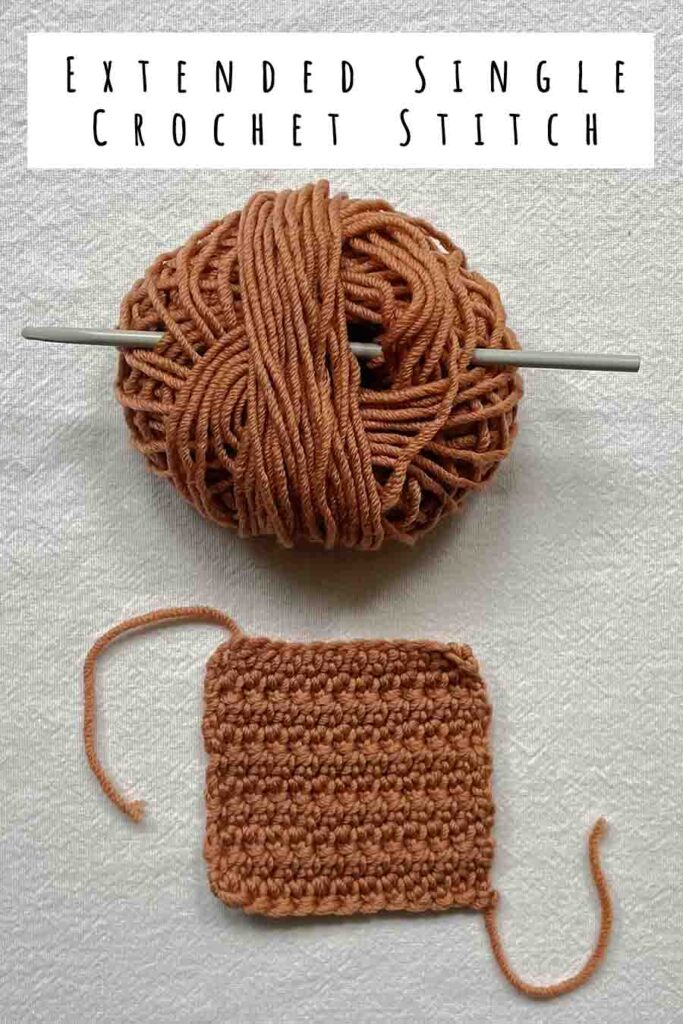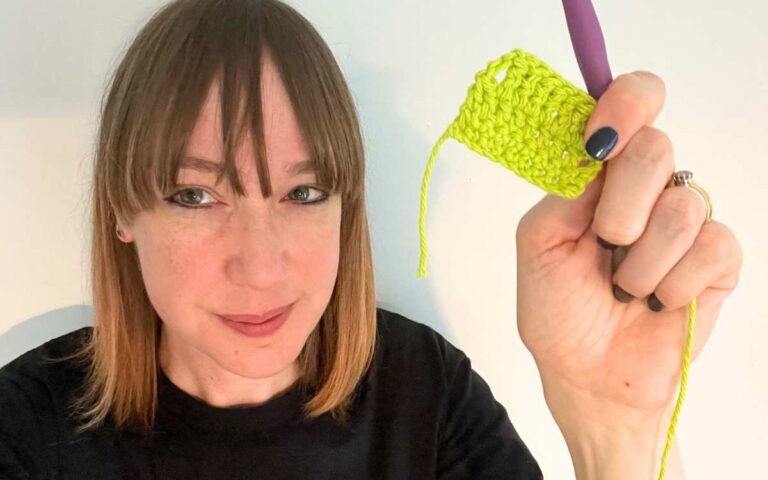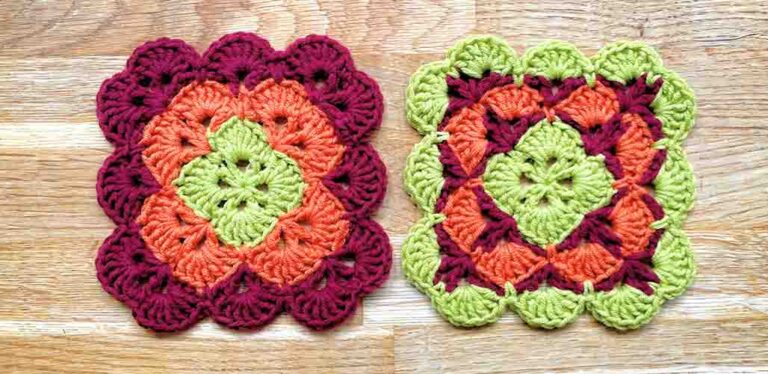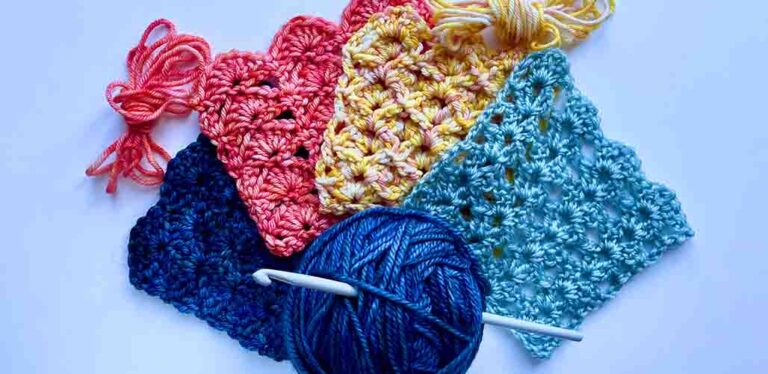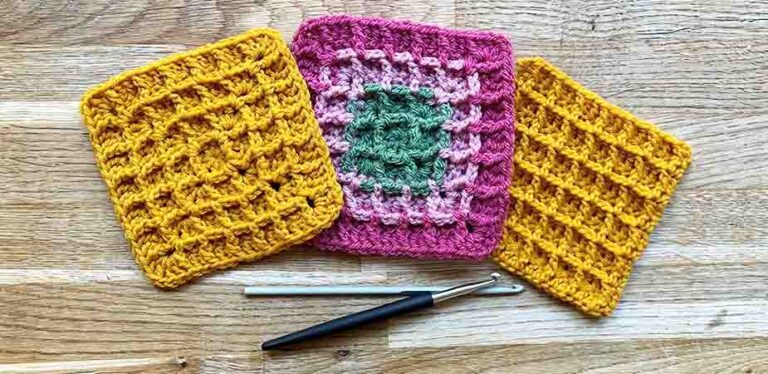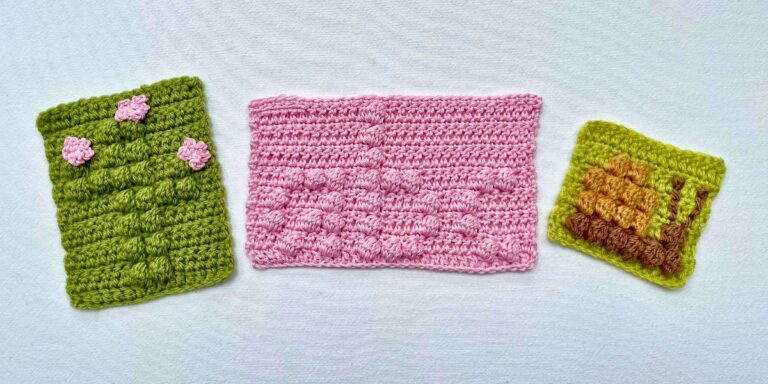Extended Single Crochet Stitch
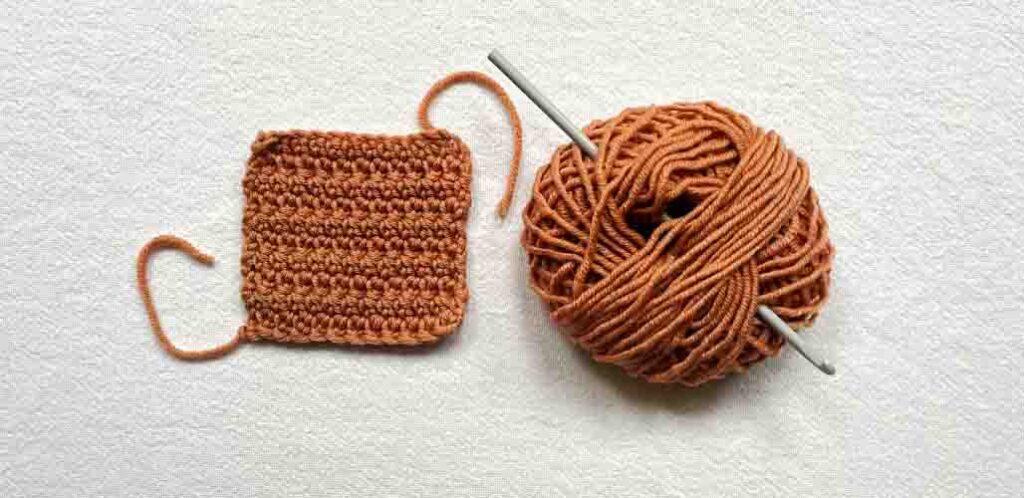
The Extended Single Crochet (ESC) is a stitch you’re pretty unlikely to be familiar with the first time you encounter it. It’s a useful transitional height between single and double crochet, with a pretty and reasonably solid texture when worked in consecutive rows. But despite its charm, most patterns use a half double stitch instead where an extended single crochet stitch would work. Here’s how to get started with ESC and use it in projects, so you can decide for yourself which mid-height stitch you prefer!
Contents
- How to work extended single crochet
- Extended single crochet turning chain
- How it compares to other stitches
- What to use it for
- Extra extended single crochet
Want to jazz up your extended crochet? Why not try out the surface crochet technique!
What is extended single crochet?
Extended single crochet is a type of stitch. As the name suggests, it’s slightly taller than a standard single crochet stitch. Overall, the height sits in between a single crochet and a double crochet, very close to – but fractionally shorter than – a half double crochet . In patterns, the abbreviation for an extended single crochet stitch is ESC, esc, or exsc.
Don’t forget! In UK terminology, the extended single crochet stitch is called the extended double crochet stitch. But it’s the same thing.
How to work extended single crochet
An extended single crochet is one of the easiest stitches to work:
- Insert your hook front to back through a stitch, as if to make a single crochet.
- Pull the yarn through.
- Put the yarn over the hook and draw it through one loop.
- Put the yarn over the hook again and it through both remaining loops.
You’re effectively making a chain stitch, with a single crochet stacked on top. Step 3 is the chain, and step 4 is the single crochet.
The turning chain
Ah turning chains, a small but important detail! The number of turning chains for extended single crochet stitch is one… or two. That’s right, depending on which set of instructions you read or tutorial you watch, you could be told to add a single turning chain or two turning chains to your foundation chain and the end of each row.
What gives?
Well, put simply, either will work. Since a turning chain of one is correct for single crochet, and a turning chain of three is correct for double crochet, it makes sense that a turning chain of two should be correct for a mid-height stitch like the ESC. But, since extended single crochet stands just under the halfway height between single and double crochet, one turning stitch can also be sufficient. To choose the number of turning chains for your project, you might like to work up a couple of swatches trialling both options. It might be that your yarn, hook size or tension really lend themselves to one option over the other. Or it might not matter which you choose!
In the samples I made for the photos accompanying this article, I used a single turning chain. And the video tutorial at the top of the page also uses a single turning chain. If you’d like to see how using two turning chains compares, you can see it in action here:
How does it compare to other stitches?
Extended single crochet is about 40% taller than regular single crochet. In fact, it’s very similar height-wise to half double crochet, as you can see here:
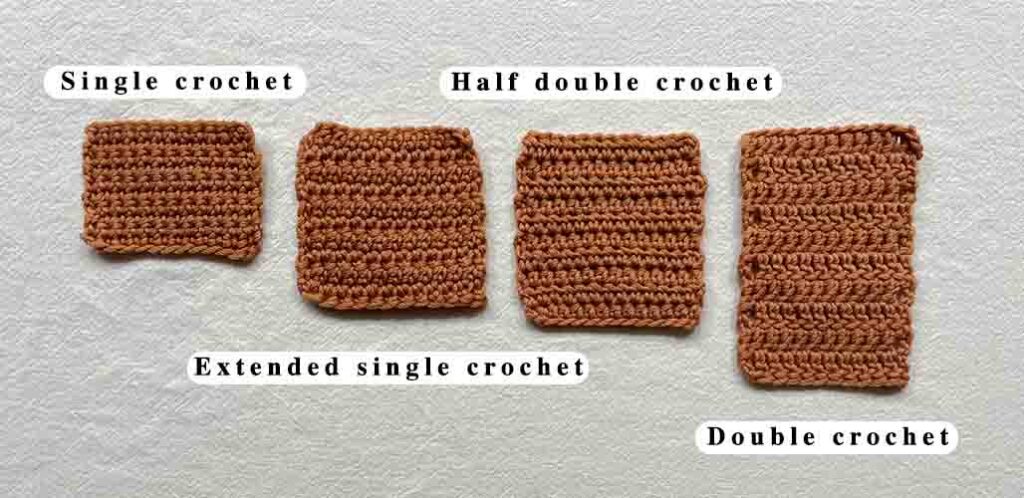
But the construction of ESC is less plush than a half double crochet. The shape and feel of a single crochet stacked on top of a chain stitch is quite slender and supple. Whereas drawing the yarn through three loops at once to create a half double crochet results in fabric that feels more dense and squashy. Despite this, ESC does use fractionally more yarn than HDC – but only about 3% more by my estimate!
Why and when to use extended single crochet
Extended single crochet is not a stitch which appears in patterns very often, and it almost never appears in lists of common stitches. Half double crochet is almost always used instead.
Despite this, several consecutive rows of extended single crochet have a pretty appearance which is relatively free from holes. It’s good for making facecloths, or adding interesting areas of texture to garments like scarves, tops and sweaters. When used in clothing, it is slightly more drape-y and fluid than half double crochet. ESC is also a useful addition to projects which play with lots of different types of stitch to create interest, such as crochet mandalas and mix-and-match stripe blankets. You can even use it to make a fetching blanket for your crochet elephant toy!
Extra extended single crochet
What’s this now? Well, we all love being a bit extra sometimes! An extra extended single crochet is worked like this:
- Insert your hook front to back through a stitch, as if to make a single crochet.
- Pull the yarn through.
- Put the yarn over the hook and draw it through one loop.
- Put the yarn over the hook and draw it through one loop again.
- Then put the yarn over the hook one last time and draw it through both remaining loops.
The difference is highlighted in bold. Rather than working one chain and a single crochet in a vertical stack, you’re working two chains and a single crochet in a vertical stack. The resulting height is not dissimilar to double crochet. Like double crochet, it also starts to feel a bit more ‘gappy’ than shorter stitches.
Summary
In many ways, extended single crochet is just a more fiddly, more yarn hungry alternative to half double crochet, for when you need a stitch height in between single and double stitch. Which is why you’re unlikely to come across it in the wild very often. But, both ESC and its over the top sister extra-ESC do have a pretty texture, which is valuable for adding interest to clothing, crochet mandalas or blankets with stripes of mix-and-match stitches.
Have you come across the instruction exsc or esc in a pattern? Let us know in the comments box down below!
